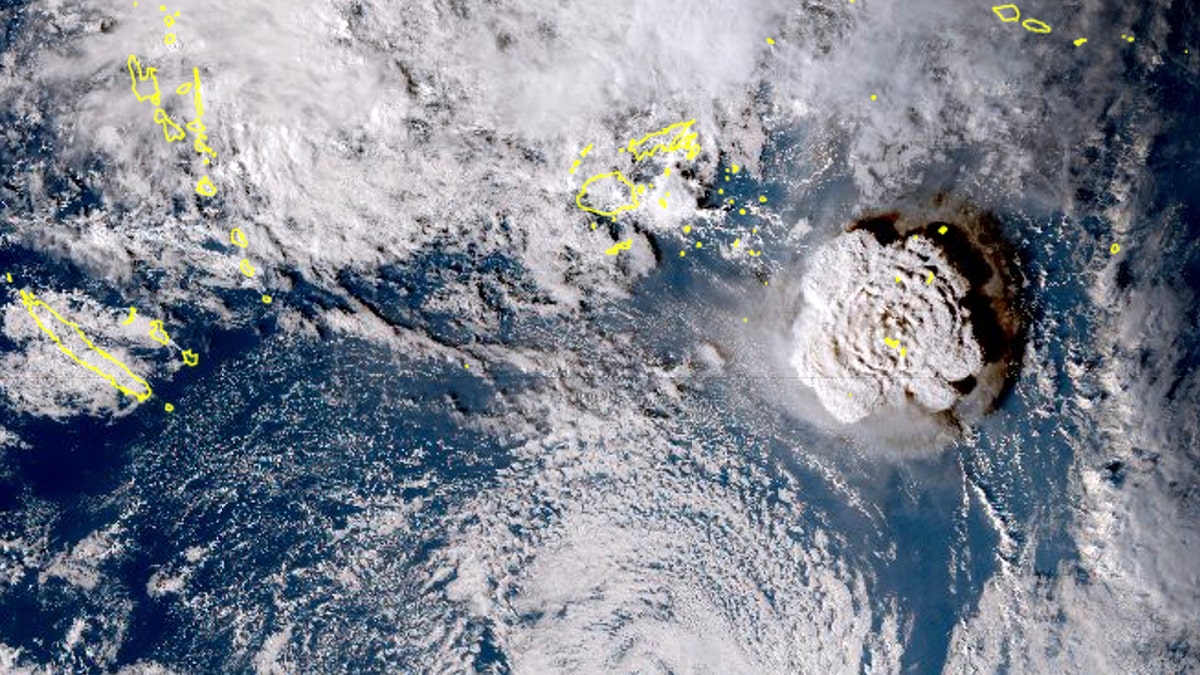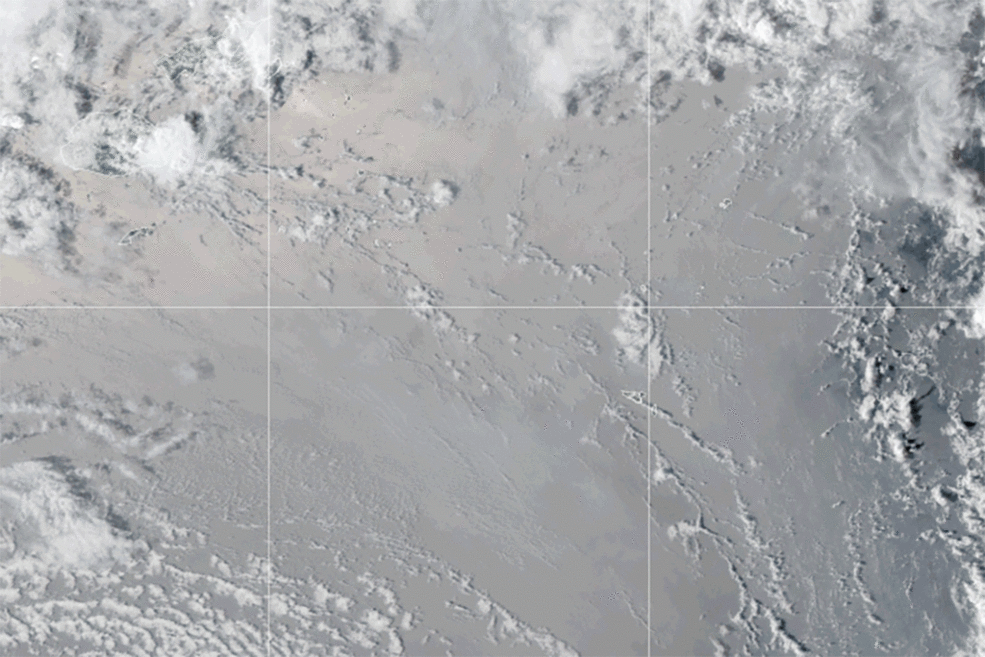Yellowstone supervolcano's 'largest and most cataclysmic event' uncovered
A newly released study suggests that the Yellowstone supervolcano may actually be waning.
A massive undersea volcano that erupted in Tonga last year reportedly disrupted satellite signals halfway around the world.
Since then, an international team of researchers has used satellite- and ground-based observations of the ionized part of the Earth's upper atmosphere, or the ionosphere, to demonstrate that an air pressure wave triggered by volcanic eruptions could produce an "equatorial plasma bubble," a hole that formed In the equatorial areas of the ionosphere, that severely disrupts satellite-based communications.
An equatorial plasma bubble, or EPB, can delay radio waves as well as degrade the performance of GPS. Disruptions to the ionization of the ionosphere, where molecules and atoms are ionized by solar radiation, and subsequent creation of a density gradient of electrons can cause the formation of the EPB.
Japan's Nagoya University noted in a news release that the area of the ionosphere with the highest concentration of ionized particles is called the F-region, which is located 150 to 800 kilometers above the surface of the Earth. The region plays a crucial role in long-distance radio communication.
WHY TONGA ERUPTION WAS SO BIG AND WHAT'S NEXT

This satellite image taken by Himawari-8, a Japanese weather satellite, and released by the agency, shows an undersea volcano eruption at the Pacific nation of Tonga Jan. 15, 2022. (Japan Meteorology Agency via AP)
The findings were published Monday in the journal Scientific Reports.
Because density gradients can be affected by atmospheric waves, it has been hypothesized that they are formed by terrestrial events, like volcanic activity.
The study authors used the Arase satellite to detect occurrences of EPBs, the Himawari-8 satellite to check the initial arrival of air pressure waves and ground-based ionospheric observations to track the motion of the ionosphere.
The university said it observed an irregular structure of the electron density across the equator that occurred following pressure waves generated by the eruption.
Furthermore, they found for the first time that ionospheric fluctuations started a few minutes to hours earlier than atmospheric pressure waves involved in the generation of plasma bubbles.
The release highlighted that this could be important because it suggests that a long-held model of geosphere-atmosphere-cosmosphere coupling needs to be edited. That model states that ionospheric disturbances happen only after the eruption.

An umbrella cloud generated by the underwater eruption of the Hunga Tonga-Hunga Ha’apai volcano Jan. 15, 2022. (NASA Earth Observatory image by Joshua Stevens using GOES imagery courtesy of NOAA and NESDIS)
TONGA VOLCANO SPEWS ENOUGH WATER TO FILL 58,000 OLYMPIC-SIZE SWIMMING POOLS INTO STRATOSPHERE
The authors also found that the EPB extended farther than predicted.
"Previous studies have shown that the formation of plasma bubbles at such high altitudes is a rare occurrence, making this a very unusual phenomenon," designated assistant professor Atsuki Shinbori, who led the team, said in a statement. "We found that the EPB formed by this eruption reached space even beyond the ionosphere, suggesting that we should pay attention to the connection between the ionosphere and the cosmosphere when extreme natural phenomenon, such as the Tonga event, occur."
Shinbori said that his team's findings are significant also from a point of space weather and disaster prevention.

This satellite image provided by Maxar Technologies shows an overview of Hunga Tonga-Hunga Ha'apai volcano in Tonga Dec. 24, 2021. (Satellite image ©2022 Maxar Technologies via AP)
"In the case of a large-scale event, such as the Tonga volcano eruption, observations have shown that a hole in the ionosphere can form even under conditions that are considered unlikely to occur under normal circumstances. Such cases have not been incorporated into space weather forecast models," he said. "This study will contribute to the prevention of satellite broadcasting and communication failures associated with ionospheric disturbances caused by earthquakes, volcanic eruptions and other events."
CLICK HERE TO GET THE FOX NEWS APP
Hunga Tonga-Hunga Ha’apai shot millions of tons of water vapor high up into the atmosphere, according to 2022 research.
NASA says the eruption sent sonic booms and tsunami waves around the world and that the amount of water blasted into the stratosphere was unprecedented. Plus, 80% of the population of Tonga was impacted in some way,. and three people were killed from the tsunami. A fourth died from related trauma.
The Associated Press contributed to this report.


